Please click here to help David McMurrey pay for web hosting:
Donate any small amount you can !
Online Technical Writing will remain free.
Another important information structure often used in technical writing is categorization. The term classification may be more commonly used but seems nonintuitive. Maybe it's because we have the Classified Ads in newspapers and classifications in the military. Instead of referring to classification and cateorization in evety instance, this chapter uses categorization and categories.
What is Categorization?
In some technical reports, certain paragraphs or sections use a kind of writing and pattern of organization known as categorization. Categorization means either (1) explaining which category a thing belongs to or (2) dividing a group of things into categories. You may find that categorization is an effective way to present background information to your readers.
See the complete example of a division-type categorization.

True categorization. You are "categorizing", in the strict dictionary sense of the term, when you place an object, action, or person in one of several categories. For example, the XYZ Corporation may have just come out with its new ABC computer but cannot decide whether to categorize it as a laptop or a notebook computer. A botanist may have discovered a new species of fungus and must now decide how to categorize it. Written documents on these questions would resemble comparison because features of the new item (the computer or the fungus) must be compared to those of the established categories. The Jupiter example in the following shows an example of a true categorization in which the writer shows why the object belongs to one specific category.
Division. Categorization can also refer to breaking a thing down into its types, classes, categories, or kinds and then discussing each one. For example, computers were once divided into several categories: minicomputers, microcomputers, and macrocomputers. And, if you have ever taken biology, you know that terrestrial life is divided into into plant and animal "kingdoms"; the kingdoms, broken down into phyla (the plural of phylum); phyla, into classes; classes, into families; families, into genera; and genera, into species. Each of these divisions represents a category.
Several key words indicate that categorizations are being discussed: classes, kinds, types, categories, sorts, or groups. Categorization can be quite useful in technical reports: it breaks the discussion of a subject into smaller chunks, and it can make the job of evaluation and selection much easier.
Jupiter can be classed as a Jovian planet because of its size and its average density. Indeed Jupiter is the largest planet in our solar system (as shown in the figure below) and one of the brightest objects in the sky, having attained a magnitude of -2.5, more than a full magnitude brighter than Sirius, the brightest star in the sky. Jupiter's brightness results from its great size of course but also from its high reflectivity: it reflects about 44 percent of the light it receives. The size and composition of Jupiter's interior are open to much speculation. Some astronomers picture the interior as having a radius of over 30,000 miles and as possibly being composed of liquid hydrogen. The core is small and dense and may contain iron silicates. The other Jovian characteristic of the planet is its density. Even though its diameter is only 11 times that of the Earth, its total volume is 11 × 11 × 11, or over a thousand times that of Earth. 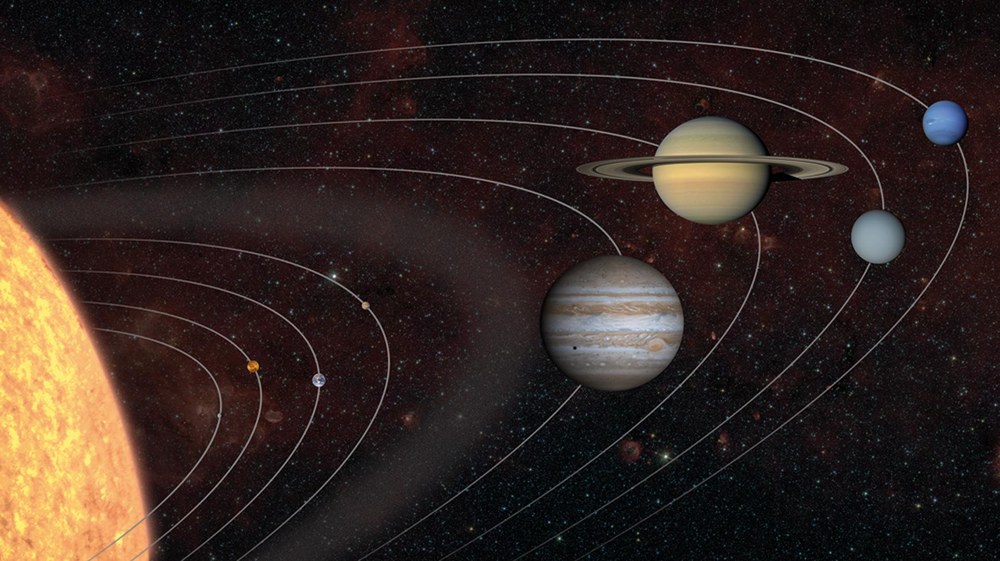
Solar System: Mercury, Venus, Earth, Mars, Jupiter, Saturn, Uranus und Neptune. Source: https://www.dlr.de/en/research-and-transfer/projects-and-missions/juice/jupiter-gas-giant-and-ringed-planet More graphically, over 1000 Earths could be packed into the space occupied by Jupiter. |
"True" categorization. In this example, the writer argues that Jupiter should be categorized as a "Jovian"-category planet. This is one type of categorization; in the other, you divide a collection of things into categories, or types.
How to Identify Categories and the Principle of Categorization?
Once you know what you are going to divide into categories, your next step is to identify the categories and the principle of categorization. For example, if you were categorizing dialysis machines (used to treat people with kidney disease), you might list these categories:
- parallel flow design dialyzers
- coil design dialyzers
- hollow-fiber capillary dialyzers
The principle of categorization is the design of the structure through which blood is filtered.
The principle of categorization then is the method you use to sort the items into categories. If you sorted marbles into red, green, and blue ones, you'd be using color as the principle of categorization. You must be careful to use only one principle of categorization at a time. For example, you couldn't sort your marbles by color and size—you might have some big red ones and some small red ones!
Here are some additional examples of categorizations and their principles:
| Topic | Category | Principle of categorization |
| Electrical circuits | Series Parallel Series-parallel |
Pathway of electrical current |
| Anemias | Blood-loss anemia Iron-deficiency anemia Pernicious anemia |
Main cause of the anemia |
| Hurricane track prediction methods | Total climatology and
persistence methods Particular climatology and persistence method Circulation and climatology method Dynamic model method |
Combination of hurricane characteristics |
| Wind machines | Lift machines Drag machines |
Interaction between the wind and propeller blade |
How to Discuss the Categories?
When you write the discussion of the individual categories, you must choose sources of discussion that enable you to explain each category fully, add comparisons so that readers can see the differences between the categories, and plan for the length of your categorization.
Choose sources of discussion. Writing the discussion of individual categories is much the same as it is with extended definitions: you combine a variety of sources to explain the categories fully—see the checklist for a listing of these sources. To discuss the three categories of dialysis machines for victims of kidney disease, you might use these sources:
| Categorization of dialysis machines | |
| Definition | Kidney disease |
| Description | Main components of the different dialysis machines |
| Process | How the different machines operate |
| Comparison | Advantages and disadvantages of these machines |
Of course, some categorization may use only one kind of writing. For example, in the discussion of different hurricane track prediction methods, the discussion would most likely be process—step by step how the methods work.
Add comparisons. No matter which sources you use in discussing the categories, comparison is an important ingredient. It helps readers distinguish the different categories from each other. Check out the following example of how comparisons work in categorizations.
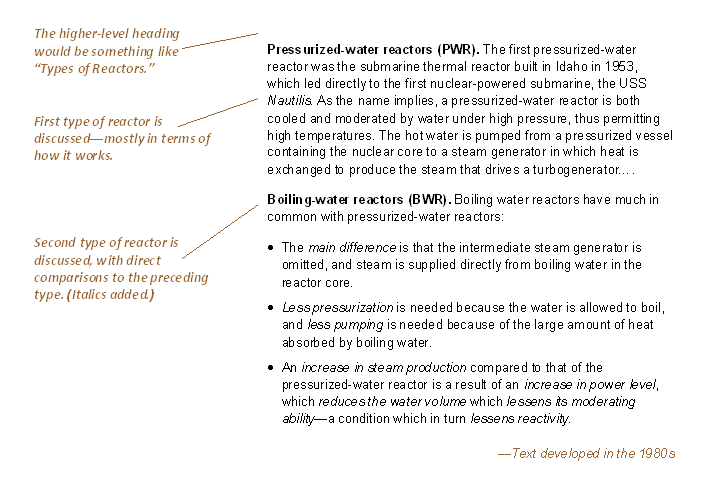
Comparisons used in categorization. Comparing the categories to each other gives readers a clearer sense of the categories as well as their distinguishing features.
Short and extended categorizations. In short categorizations, an overview of the categories is packed into one sentence or into one paragraph. In an extended categorization , you might have one or more paragraphs on each category. For an extended categorization, you'll use a paragraph or more to discuss each of the categories, and a separate paragraph to introduce these categories—as illustrated in the extended categorization in the following.
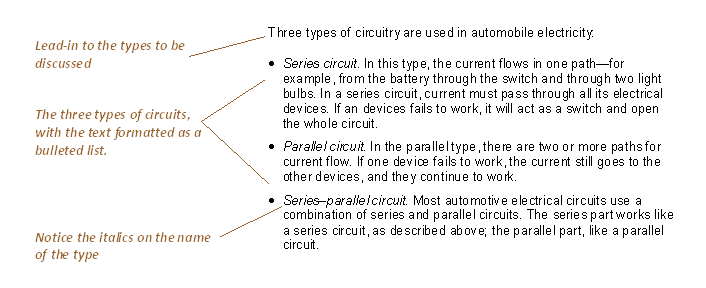
Single-paragraph categorization . All the categories are discussed briefly in this one section. ("Types" is a synonym for categories.)
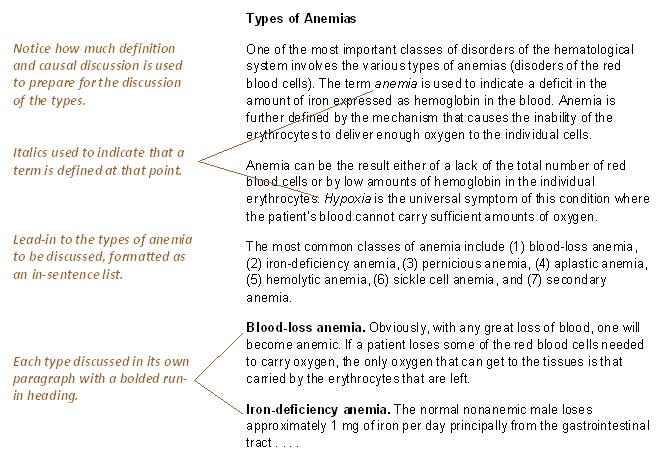
Extended categorization with categories treated each in their own paragraphs
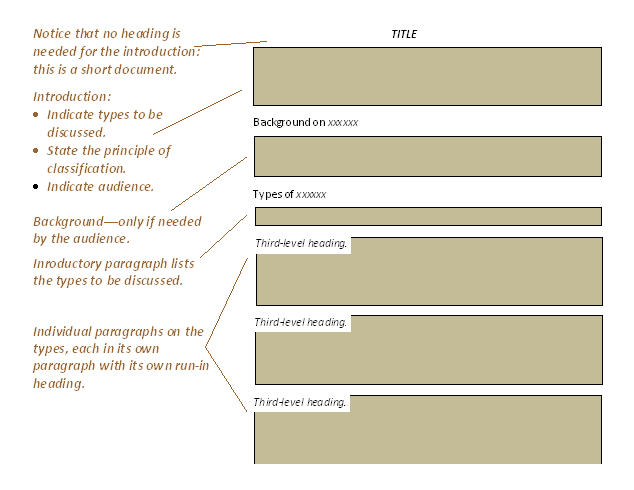
Schematic view of categorization. Remember that this is just a typical or common model for the contents and organization—many others are possible.
I would appreciate your thoughts, reactions, criticism regarding this chapter: response—David McMurrey
